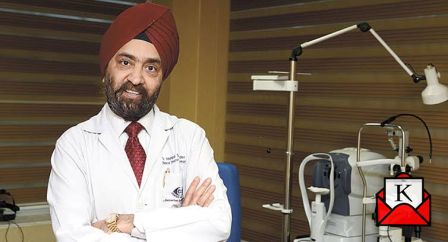Guest Blog-Early Diagnosis And Timely Treatment Important To Prevent Vision Loss Due To Diabetes


People with type 1 or type 2 diabetes can develop Diabetic Macular Edema (DME), a complication of diabetic retinopathy that affects the eyes that can lead to vision loss and blindness if not taken proper care or treatment. It starts when one’s blood sugar isn’t well controlled. Consistently high blood sugar harms blood vessels throughout your body, in the heart, as well as the small blood vessels in the retina, the tissue at the back of the eye that sends images to the brain. Without healthy blood vessels, the retina can’t work the way it’s supposed to, which ultimately leads to diabetic retinopathy.
According to a survey on National Diabetes and Diabetic Retinopathy conducted between 2015-19 in India, the Union Health Ministry has revealed that the prevalence of Diabetic Retinopathy (DR) is 16.9 percent while the prevalence of sight-threatening DR is 3.6 percent. In India, the retinal disease burden is on the rise.
This is a worrisome disease that is affecting the millennials and the young working population; while this disease is not completely preventable, its onset can be delayed with regular exercises, a balanced diet, and strict control of systemic conditions such as diabetes mellitus, along with treatment adherence.
This issue was compounded during Covid, as access to timely care for a lot of medical conditions including retinal diseases was disrupted. Many ophthalmologists in India have been unable to see patients over the last year, with centers in India reporting as high as a 98.7% decrease in treatment uptake, attributed to limitations with hospital infrastructure and public transportation. New, as well as old patients, seeking in-clinic treatment, have drastically reduced over the year. Additionally, several patients with eye diseases sought help at advanced stages, wherein they were unresponsive to treatment.
In mild cases, treatment for diabetic retinopathy is not necessary. However, regular eye exams are critical for monitoring the progression of the disease, along with strict control of blood sugar and blood pressure levels can greatly reduce or prevent diabetic retinopathy. In more advanced cases, treatment is recommended to stop the damage of diabetic retinopathy, prevent vision loss, and potentially restore vision.
- Anti-VEGF therapy: Anti-VEGF therapy involves the injection of the medication into the back of the eye. The medication is an antibody designed to bind to and remove the excess VEGF (vascular endothelial growth factor) present in the eye that is causing the disease state.
- Intraocular steroid injection: Intraocular steroid injection is a treatment for diabetic macular edema. This therapy helps reduce the amount of fluid leaking into the retina, resulting in visual improvement.
- Laser treatment: Laser treatment is often helpful in treating diabetic retinopathy. To reduce macular edema, a laser is focused on the damaged retina to seal leaking retinal vessels. For abnormal blood vessel growth (neovascularization), laser treatments are delivered over the peripheral retina.
- Vitrectomy: Vitrectomy is needed in advanced proliferative diabetic retinopathy. During this microsurgical procedure that is performed in the operating room, the blood-filled vitreous is removed and replaced with a clear solution. In addition to a vitrectomy, retinal repair may be necessary if scar tissue has detached the retina from the back of the eye. Severe loss of vision or even blindness can result if surgery is not performed to reattach the retina.
One must be alert and visit an Ophthalmologist or a Retina specialist immediately in case of any symptoms such as blurry vision, seeing colors that look washed out, seeing more floaters in your vision, or double vision. It is very important for people to maintain optimal eye health from a young age. Through regular screenings, particularly if an individual is at greater risk due to pre-existing conditions.
About the author- Dr. Mahipal Sachdev—Medical Director and Chairman, Centre for Sight Group of Eye Hospitals
